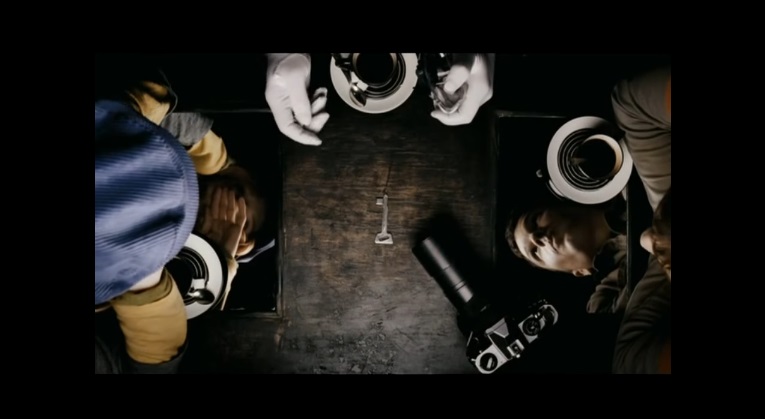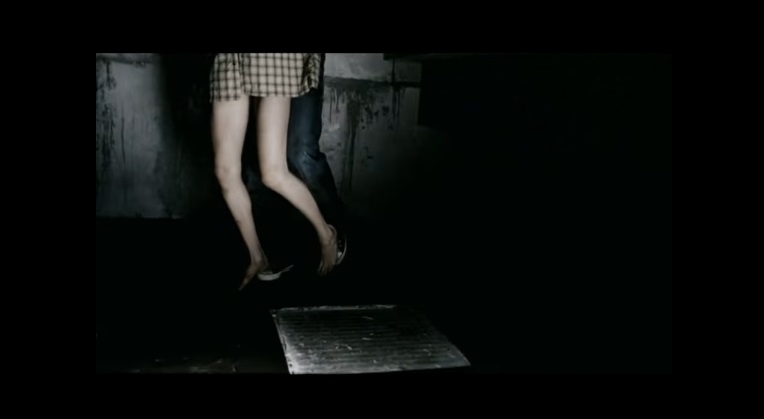The previous post happened to appear a surrealistic attempt to guide through the plot of the film orANGELove, as well as movie itself does by its filming and montage techniques. It gives the impression of abruptness and suddenness to confuse and create a puzzle. But in fact this scheme itself reflects the situation when one may get results that he/ she has HIV/ AIDS.
That is the problem which takes a major place in the Ukrainian cultural and social side, but no one really talks about it. Obviously, there are organisations which take care of the problem of HIV/AIDS in Ukraine, but it does not change its position of social tabu. Moreover, only lesser percentage of youth is properly familiar with the ways is could be transmitted, ways of protection, whom to consult in such cases. I remember in my school we had fundamental number of lessons about HIV/ AIDS but they could not protect me from monthly seeing used syringes trown around the territory of kindergartens and my yard.
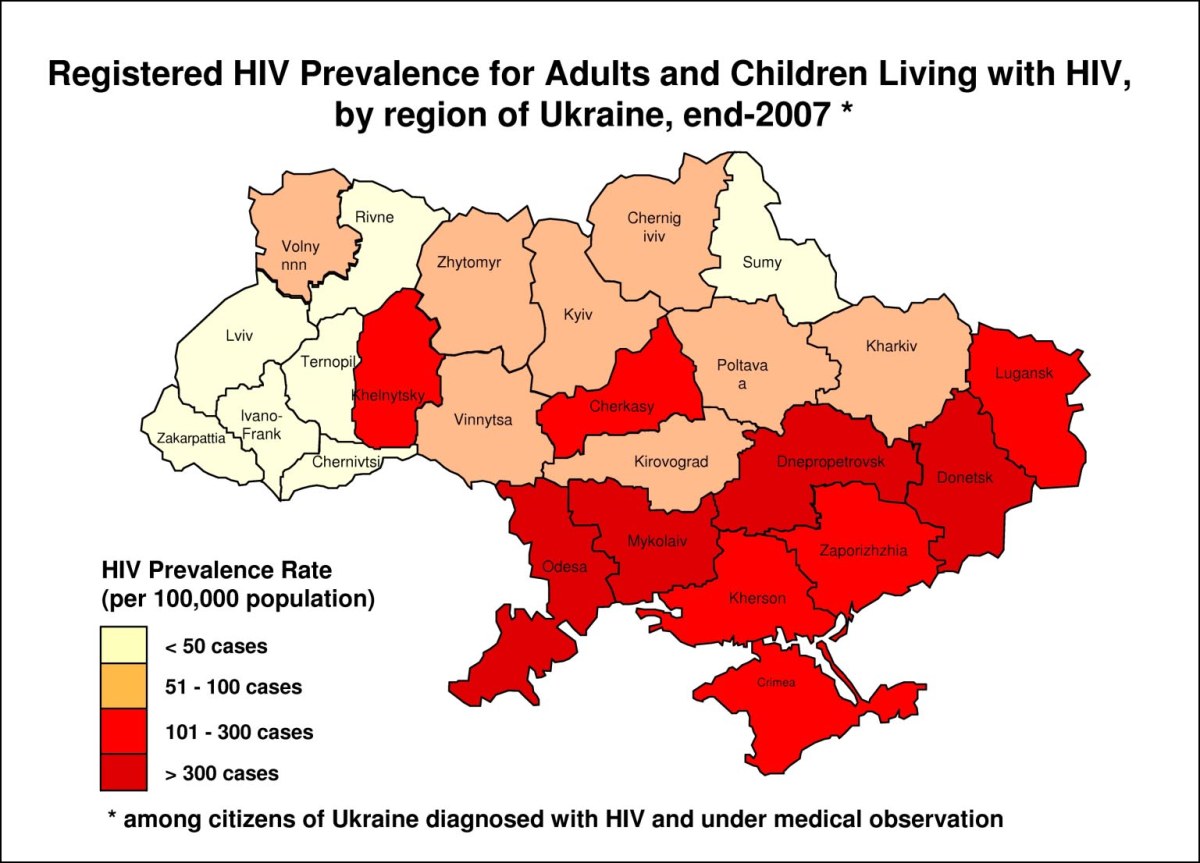
The statistics is quite shocking especially taking in attention the fact that it grows every year. The picture above demonstrates the situation of the year when the movie was released, while the events took place in Kyiv.
Altogether 280 297 new cases of HIV infection were officially registered in Ukraine since 1987. Since 1987 – 38 128 died from AIDS associated diseases in Ukraine. Ukraine keeps the leading position in Europe in terms of new HIV infection cases.
The movie introduces the viewers to this turn very suddenly, although there was a hint (foreshadowing) – the condom opening. Only attentive viewer would notice it and would actually think why it was shown. “That’s why you have this fervor to condoms” says Roman. Katya, being a young woman, reflects the point that “[today] most of the newly – registered cases of HIV infection are amongst young people aged from 15 to 30.”
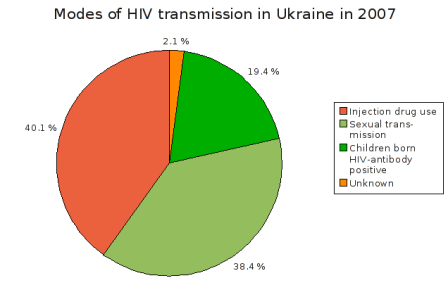
Symbolically (I guess) Roman gets the disease, through the rare ‘unknown’ mode, he cuts his hand. Of course, he does it consciously and by his own decision, but the main thing is why he does it. The Player, whose back story tells us that he had AIDS, gets Roman into another game: “[Roman] has to live” even if Katya leaves him.
The probability of the receiving wrong results can be random and notably no one is protected from it, because machines can make mistakes. That is why one should not panic but go and make test for the second and even for the third time.
Funnily enough, the use of the word Angel is not random, because this connection was created already the film/ play Angels in America by Mike Nichols/ Tony Kushner, meaning that diseased people are somehow chosen by Angels, bringing up some political and social issues to the public, however this theory is controversial.
The orange revolution of 2004 is mentioned very shortly, even not being named but by its slogan “Разом нас багато – нас не подолати!”, so only if one is familiar with it is recognizable. It played the big role in the history of independent Ukraine, it has driven generations, changed perspective, believes and the government. This event goes along with the color of the film, because events of the revolution adopted the color which was chosen by one of the President candidates (V.Yushchenko) to be the color of his election campaign. Any revolution is a sign of awareness of nation’s disapprovement of current governmental and social disputes; it is an attempt to change, to resist, to protest a current mode and the way things work. The symbol of the orange ribbon was adopted by this revolution as a non-violent protest, and again there is a connection with AIDS’s red ribbon. In my opinion, both ribbons are to bring awareness, to carry meaning of the history.
Any revolution is a temptation and in the case of Roman, who almost left the game by leaving the apartment, it was a harsh decision to stay. He violently argued with Katya, trying to prove that he cannot live not taking photos, that this could be his lucky ticket. Their argument itself reminds a mini revolution. He, as a photographer, has almost sick plans for a front page on war, reflecting how the media works, which is one of the hidden sides of any war and revolution. It brings me to the powerful short movie which became famous several years ago, One Hundredth of a Second. Where is that fine line between acceptance and permissibility, normality and morality, human and artist? “People are interested in what they can not see .. for example, war …”, or revolution in this case. People see the final result, but they do not know what it takes to reach it, how many victims were made and what was their significance: “if you want the viewer to be sad – you need to cry over the photo”, “so people would believe [it]”.
The film uses an orange leaf as its emblem which is reflected in the weather of Kiev. In the period of September and October Ukraine changes its color from green to yellow, orange, brown and red shades, which consequently gave the name of “golden autumn”.
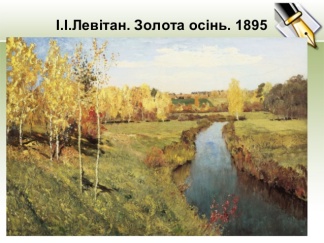
I remember from the primary school we were introduced to autumn as to a young girl, who brings fruits and harvest, it is known to be symbol of fertility. We often are shown the pictures by T.Shevchenko Kateryna and I.Levitan Golden Autumn and are asked to write essays about what we associate them with.
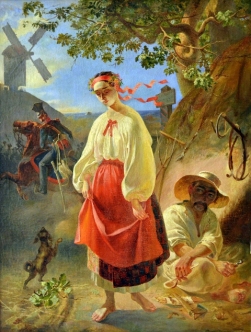
There are events and school holidays dedicated for its honor. We study songs, poems (V.Bychko/ В.Бичко, M.Poznanska/ М.Познанська, I.Koval/ І.Коваль, N.Krasotkina/ Н.Красоткіна, L.Kostenko/ Л.Костенко, L.Novykova/ Л.Новикова, N.Zamriya/ Н.Замрія etc. and etc.), legends about the Girl-Autumn (Дівчина-Осінь):
According to the popular legend, Autumn is the eldest daughter of the Sun. She was the last to leave the parental home and became the fourth of the year seasons (season – pora (пора) in Ukrainian is female) on Earth.
and fairytale: the was a king who had daughter Autumn. She was beautiful and young, had golden braids and sky-blue eyes. She was asked to marry by knight Veresen (Вересень – September, by the way, all months in Ukrainian are male), she agreed but asked him to bring some wedding presents: pearls from the far sea lands. But while he left she was enchanted by horseman Jovten (Жовтень – October), who made her forget about Veresen and marry him instead, gifting her the wedding presents: gold brocade and purple corals. At the day of their wedding Veresen returned and, discovering what event people celebrate, threw the presents on the grass. After Autumn saw them she remembered everything and expeled Jovnet for his lies. She became upset, worried so she decided to ask for advice wise Lystopad (Листопад – November), who told her that she would never be able to bring her loved Veresen back because of the strong Jovten’s spell, however if she gets rid of his presents, Veresen will come back every year for one month. And Autumn did so: she threw golden silk, purple corals away, and wind brought them on the tree branches coloring them in sad golden shades. Since that time, every year, one can see the silver hoarfrost at the end of September (Veresen), then October (Jovten) enchants with gold and corals. Then Autumn longs for her lost lover, and asks for advise wise gray November (Lystopad).
Additionally, the autumn time is known to be one of the best ones to get married. People believed it would bring wealth and family happiness. There even more specific believes concerning every month, which go in parallel with the fairytale above: September is for quiet and peaceful life; October brings hard life; November – a rich one.
There is also the legend about Indian summer (Babyne lito (Бабине літо/ Бабье лето) what literally means Women’s or Grandmother’s summer): there is a lot of work for women in autumn in regard of harvest. So women decided to send one of them to the queen Autumn to tell about “eternal regret and ask to facilitate their troubles”. On the way the young girl is tempted by two guys who try to seduce her, but while they get into fight for her she crosses the river being happy that she overcame temptation to stand honest in front of the queen. When she reached the place where the queen Autumn lived, she asked to prolong warm time of summer for two-three more weeks, so they can finish collecting harvest. The queen Autumn agreed naming this time Babyne lito, and said she would give them sigh with a flying cobwebs over fields that it is coming.
The words featurise her are golden-braided (золотокоса), bright-gold (яскраво-золота), sad (сумна), dark-coloring (темнобарвна), neat (чепурна), solemn (урочиста), festive (святкова), rich (багата), beautiful (красива), kind (добра), generous (щедра), puple (багряна) etc.
The photos above are taken by me in autumn of 2013, Kiev.
It is a typical portrayal of the golden autumn of Ukraine, and this concept mythologizes the place. On the contrary, the dramatic events of the movie unfold to contrast the background of this Heaven- and fairytale-like atmosphere.
There is no place on Earth which could really be Heaven, so Ukraine is not an exclusion of that. People are not ideal, they make mistakes and crucial decision, they take their destiny in their own hands and carry responsibility for their own actions, sometimes playing foolish game and getting driven by own passions and emotions. The revolution, the desire to become a famous artist, the decision to get AIDS, the desicion to leave, a resistance when somebody or something limits us (the revolution and the game for apartment) are part of the Ukrainian dream and go back to the concept of ‘host’ from my 1st review: “I’m a free man, I got used to it and I cannot live differently” confirms the point Roman.










